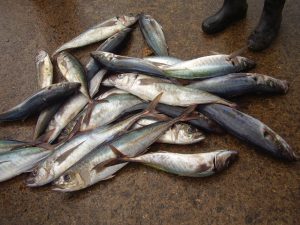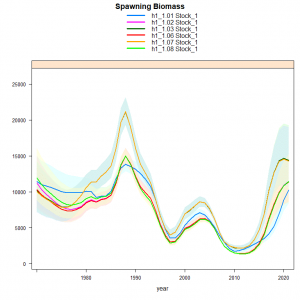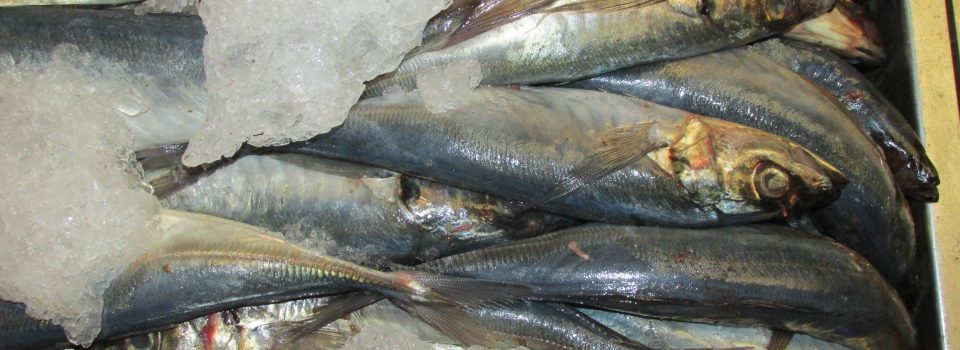A national workshop to review and improve (“benchmark”) jack mackerel stock evaluation considering the new individual growth model impact was organized by IFOP
November 4th, 2022
IFOP held a national workshop to review and improve horse mackerel stock’s evaluation considering new information generated by our Institution, which shows that horse mackerel has: faster individual growth; higher natural mortality; and earlier maturity.
The workshop was planned by IFOP and Fisheries and Aquaculture Undersecretariat (SSPA) in preparation for a similar workshop to be held by South Pacific Regional Fisheries Management Organization (OROP-PS) scientific committee in Seattle. The workshop was organized by Ignacio Payá, and was attended by SSPA administrators, Technical Scientific Committee members, researchers from IFOP, INPESCA, Universidad de Concepción and P. Universidad Católica de Valparaíso.
During the workshop, IFOP’s team (Ignacio Payá, Renzo Tascheri and Mauricio Mardones) previously obtained results were analyzed and complementary sensitivity analyzes were carried out. The workshop was carried out with a standard of full transparency, that is, all the data and programs were available to allow the participants to replicate analyzes and to contribute with new analyses.

The figure shows spawning biomass estimates sensitivity against different data and parameters combinations of estimation model. The series with the highest level corresponds to highest natural mortality scenario.
In all analyzed cases, jack mackerel stock current condition was healthy, with biomass values greater than maximum sustained yield biomass. The most important parameter was natural mortality followed by stock-recruit escapement parameter relationship and maturity at age.
